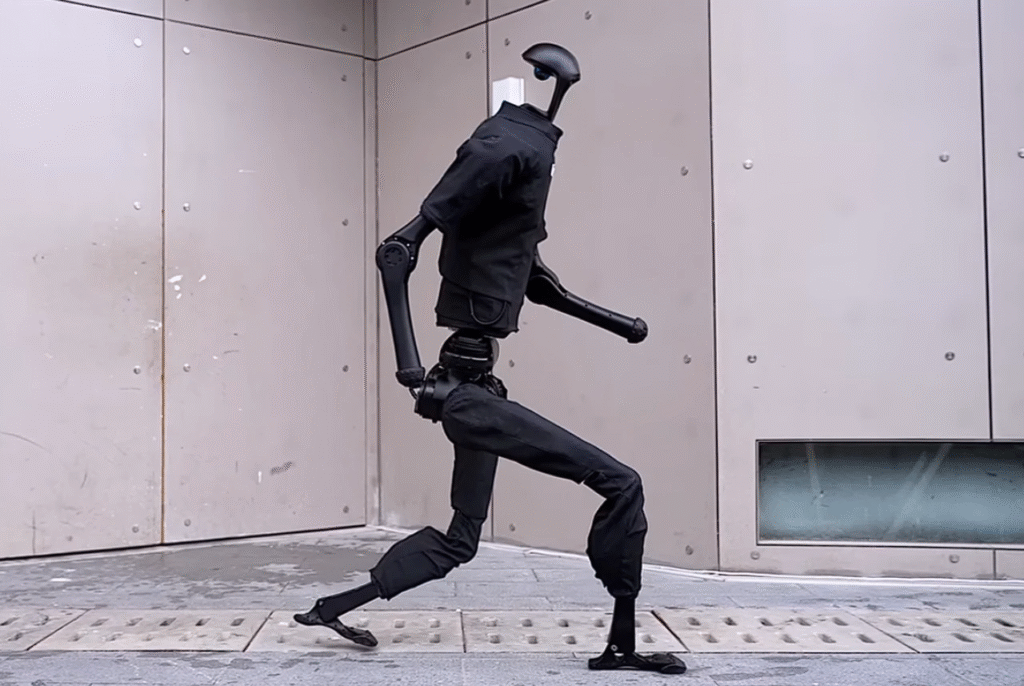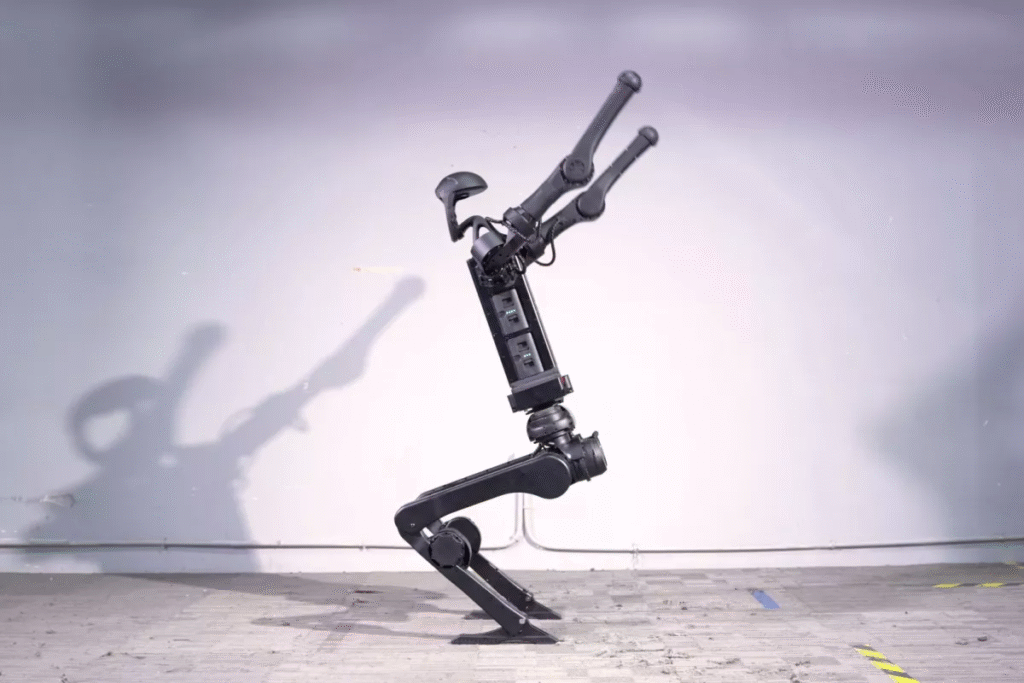As humanoid robots continue to shift from science fiction into real-world deployment, one name is beginning to dominate headlines and development labs alike: Unitree Robotics. Known initially for its agile and affordable quadruped robots, Unitree took a bold leap forward with the release of the Unitree H1 — a full-sized, bipedal humanoid robot engineered to balance affordability with capability.
The H1 represents more than a hardware showcase. It signals a critical turning point in robotics: a moment where functional humanoids are no longer the sole domain of billion-dollar research labs or internal projects at mega-corporations. With its blend of speed, flexibility, and open development, the H1 is quickly earning its place in the global humanoid race.
In this article, we’ll take an in-depth look at the Unitree H1, from its technical specifications and AI architecture to its real-world applications and industry potential. Whether you’re a robotics researcher, tech entrepreneur, or just curious about the future of humanoid machines, this guide offers a complete breakdown of what the Unitree H1 brings to the table.
What Is the Unitree H1?
The Unitree H1 is a full-size humanoid robot designed for general-purpose tasks, research, AI experimentation, and light industrial support. First introduced in 2023, it is the company’s flagship bipedal platform and represents Unitree’s pivot from quadrupeds like the Go1 and B1 into advanced humanoid systems.
Standing approximately 1.80 meters (5.9 feet) tall and weighing just under 50 kilograms, the H1 resembles a lean, athletic humanoid with dynamic motion capability and visual awareness. It is fully electric, modular in design, and built with real-world use cases in mind — not just lab demonstrations.
Key Specs and Hardware Breakdown
To understand what sets the H1 apart, we need to examine its engineering. Unlike many humanoids that rely on expensive or custom-built components, the H1 is designed for mass-manufacturability and rapid iteration — without sacrificing performance.
➤ Core Specifications:
- Height: ~1.80 meters
- Weight: ~47–50 kg
- Top Speed: Up to 1.5 m/s (walking)
- Joints: 30+ degrees of freedom with torque-controlled motors
- Actuators: Custom-developed high-torque, lightweight electric motors
- Power Source: Lithium battery (modular, hot-swappable)
- Runtime: Approx. 2 hours of continuous operation
- Cooling: Passive and active heat dissipation system
➤ Sensors and Perception:
- LiDAR (360°): Enables spatial awareness and obstacle detection
- Stereo Depth Cameras: 3D perception for object recognition and environmental mapping
- IMU + Force Sensors: Maintain balance and dynamic movement adjustment
- Foot Pressure Sensors: Aid in gait correction and load balancing
➤ Control & Software:
- Onboard AI Unit: Optimised for reinforcement learning, motion planning, and real-time decision-making
- Control Frequency: >1000Hz low-level real-time control
- SDK: Developer-friendly environment supporting Python, ROS, C++, and third-party libraries
- Wi-Fi and 5G support for remote operations and cloud connectivity
Dynamic Movement: Not Just Walking

One of the most striking features of the Unitree H1 is its agility. The robot doesn’t just “walk” — it moves with a fluidity that suggests years of biomechanical optimisation. Recent demonstration videos from Unitree show the H1 executing dynamic tasks such as:
- Climbing stairs
- Balancing on one leg
- Squatting and lifting light weights
- Quick walking gait over uneven terrain
This is made possible by Unitree’s proprietary joint torque feedback system and lightweight actuator design, giving the H1 the ability to adapt to environmental conditions in real time.
Compare this to earlier-generation robots that required scripted, pre-defined movements. The H1 is capable of learning from feedback, adjusting on the fly, and integrating AI-based learning into its motion systems.
AI Capabilities and Learning Architecture
The H1 is not just a mechanical marvel — it’s an AI-driven platform capable of autonomous operation and skill acquisition.
➤ Key AI Features:
- Reinforcement Learning Framework:
The H1 uses motion imitation and reward-based learning to perfect balance, navigation, and human-like movement. It learns by doing — much like how children develop motor skills. - Vision-Based Object Recognition:
Its front-facing stereo cameras are powered by computer vision models that enable it to recognise, locate, and respond to objects, people, and commands in real time. - Sim-to-Real Training:
Many skills are trained in simulated environments using physics engines, then deployed onto the real H1 — a process that speeds up development while reducing physical wear. - Task Planning Module:
Built-in logic allows for conditional tasks such as: “if obstacle detected, change path,” or “if human in front, initiate interaction module.”
Real-World Applications: What Can the H1 Actually Do?

Though still in the early stages of deployment, the Unitree H1 is already being explored for a wide range of applications. These span across industries and use cases:
1. Manufacturing and Logistics
- Light payload handling
- Warehouse navigation and item transport
- Repetitive task execution (e.g., scanning, packaging)
With additional arm toolkits, the H1 could be used for light assembly tasks, machine tending, or managing routine factory floor duties — particularly in labour-scarce environments.
2. Research and Education
Universities, robotics labs, and AI institutions are using the H1 for:
- Testing reinforcement learning algorithms
- Studying human-robot interaction
- Teaching robotics programming and simulation
Its relatively affordable cost compared to competitors makes it ideal for academic environments.
3. Healthcare and Elder Assistance
Though not yet certified for medical-grade environments, the H1 shows promise for:
- Monitoring elderly individuals
- Fetch-and-carry support in homes or assisted living facilities
- Serving as a mobile interface for remote doctors or family members
4. Security and Surveillance
With cameras, movement detection, and the ability to patrol set paths, the H1 could serve in:
- Corporate building surveillance
- Airport security patrols
- Event monitoring (paired with facial recognition)
5. Retail and Hospitality
Early tests suggest the H1 could eventually handle:
- Greeting customers
- Providing directions or product information
- Light item delivery within large retail spaces
How the Unitree H1 Compares to Other Humanoids
Here’s how the H1 stacks up against notable competitors:
| Feature | Unitree H1 | Tesla Optimus | Boston Dynamics Atlas | Xiaomi CyberOne |
|---|---|---|---|---|
| Status | Available for dev/research | Prototype/demo | R&D only | Prototype/demo |
| Max Speed | ~1.5 m/s | ~1.2 m/s | ~2.5 m/s | Unknown |
| Cost Estimate | ~$90,000 | TBD | Not for sale | ~$100,000+ |
| AI Training | Reinforcement learning | Neural nets + DOJO | Internal scripted + RL | Basic CV/AI |
| SDK Available? | Yes | No | No | No |
What makes Unitree stand out is its commercial availability, flexible SDK, and active user base — none of which are true for Tesla or Boston Dynamics (yet).
Why Developers and Startups Are Embracing the H1

The developer community is increasingly turning to Unitree for one reason: it’s accessible.
While many robotics platforms are closed-source or prohibitively expensive, the H1 offers a middle ground where:
- Developers can build and deploy real applications
- Startups can test service ideas (like robotic concierge or mobile assistants)
- AI researchers can run models on physical machines, not just simulations
Unitree also actively supports its developer network, offering updates, open documentation, and a responsive support team. This has created an ecosystem that resembles what DJI did for drones — and that matters when scaling any hardware product.
Challenges and Limitations
Despite its impressive features, the H1 still faces several hurdles:
- Battery Life: While 2 hours is respectable, long shifts would require swapping or docking stations.
- Task Complexity: It can’t yet handle complex manipulation tasks (like folding laundry or opening tight doors).
- Market Trust: As a newer player, Unitree must prove long-term durability, safety, and support at enterprise levels.
- Software Stability: As with any open SDK, bugs, updates, and integration issues are still evolving.
That said, these challenges are not unique to Unitree — they reflect the entire humanoid category, which is still in early growth stages.
Final Thoughts: A Platform, Not Just a Product
The Unitree H1 isn’t just a humanoid robot — it’s a development platform for the next generation of robotics innovation.
By combining affordability, extensibility, and a growing developer community, Unitree is paving the way for humanoids to become not only practical but also programmable and personal. Whether the H1 becomes the standard or simply opens the floodgates for others, it has already changed how we think about robots in our daily lives.
The future of robotics is no longer locked behind closed labs. With robots like the H1, it’s walking among us.
Frequently Asked Questions (FAQ)
Q: Can individuals buy the Unitree H1?
Yes, but it is primarily marketed to developers, institutions, and enterprises. Orders usually require direct contact with Unitree.
Q: What kind of programming environment does it use?
Unitree provides an SDK that supports C++, Python, ROS, and other common robotics development tools.
Q: Is the H1 autonomous or remote-controlled?
It is capable of both. You can program it for full autonomy or control it via wireless remote for certain tasks.
Q: How does it avoid obstacles or people?
Using LiDAR and depth cameras, the H1 maps its environment and adjusts its path in real time to avoid collisions.




